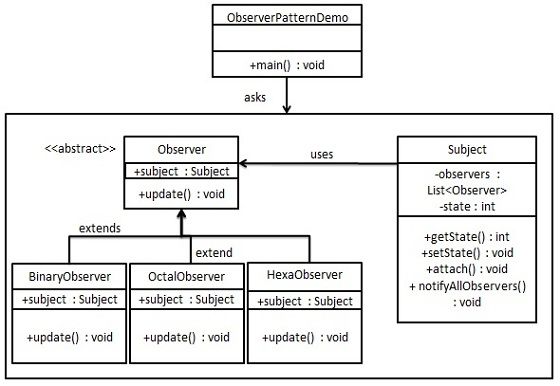观察者模式
观察者模式:当对象间存在一对多关系时,则使用观察者模式(Observer Pattern)。比如,当一个对象被修改时,则会自动通知它的依赖对象。观察者模式属于行为型模式。简单举个例子:有三个警察同时在监视一个小偷,都在等小偷偷东西从而人赃并获,当小偷开始偷窃时,三个警察同时都有所行动。
本人学习网站->http://www.runoob.com/design-pattern/observer-pattern.html。下面是一个demo的UML图。

下面是一个简单警察小偷的demo:
定义小偷类:
public class Thief { private List<Police> police = new ArrayList<>(); public void steal() { System.out.println("I'm stealing things aha"); police.stream().forEach(p -> p.policeReaction()); } void add(Police p) { police.add(p); } }
定义警察抽象类:
public abstract class Police { protected Thief thief; protected String name; public abstract void policeReaction(); }
定义警察1:
public class Police1 extends Police { public Police1(Thief thief, String name) { this.thief = thief; this.name = name; //将该警察添加进观察列表 thief.add(this); } @Override public void policeReaction() { System.out.println(name + "警官抓贼啦"); } }
定义警察2:
public class Police2 extends Police {
public Police2(Thief thief, String name) {
this.thief = thief;
this.name = name;
thief.add(this);
}
@Override
public void policeReaction() {
System.out.println(name + "警官抓贼啦");
}
}
测试demo:
public static void main(String[] args) { Thief thief = new Thief(); new Police1(thief,"JACK"); new Police2(thief,"LUCAS"); thief.steal(); }
-------------------------------------------------------------------------------------------
个人感觉,了解了设计模式对看源码有非常大的帮助,很多优秀的框架中运用了大量的设计模式,值得借鉴和思考,大家加油!



